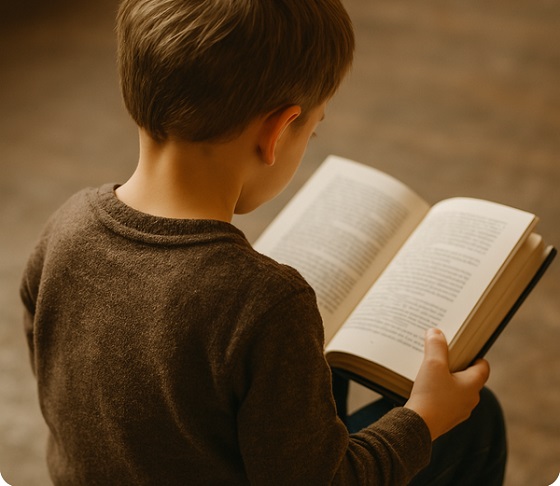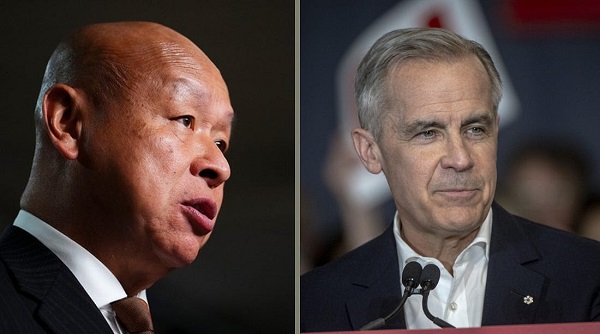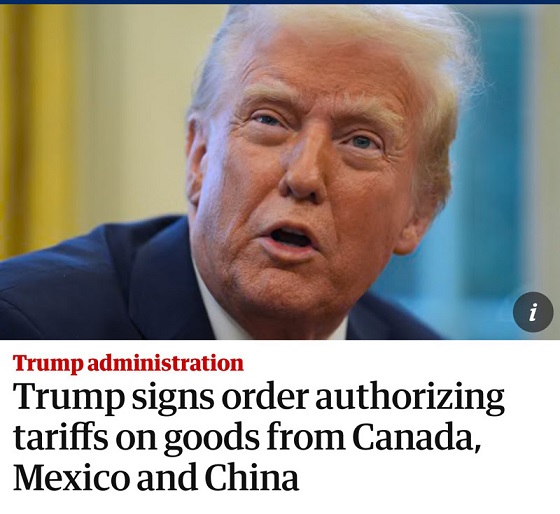Frontier Centre for Public Policy
Moscow attack highlights need for secure borders

From the Frontier Centre for Public Policy
Are candid questions about border security and immigration really semi-racist, or are they legitimate self protection? Are questions about unchecked people entering our countries from parts of the world where Islamists have great influence “Islamophobia”, or are such questions perfectly understandable given the Islamist-inspired attacks that occur with regularity around the globe?
The shocking terrorist attack that took place on March 22, 2024 near Moscow is still reverberating around the globe. Exactly who was responsible for the attack and why it happened is not completely clear. One of the many Islamist terrorist factions, IS Khorason Province, has taken “credit” for the bloody massacre, but the details are murky. To add to the murk the videos that have emerged showing large powerful shooters that some say stand in stark contrast to the videos showing smaller and less robust Tajik suspects confessing to being the shooters. So, conspiracy theories are flying.
Meanwhile, Vladimir Putin seems intent on trying to blame Ukraine, but that is entirely predictable. Everything Putin says is now taken with a grain of salt by the international community. Ukraine does not appear to be connected. What is known is that Putin was warned recently by the U.S. that exactly such an attack was in the works, but angrily blew off the warning as American propaganda. How Russians will react to this information -or even if they will find out about it – is not known. We don’t know much more than that at this time. Hopefully the details will become clearer with the passage of time.
However, two facts about the incident that do appear to be reasonably certain are that the perpetrators were not Russians, and that the attack was related to an Islamist terror group that hates Russia – and apparently everyone else that does not share their philosophy.
That definitely includes Canada. Should we worry about such an attack taking place here?
At one time the answer would be “probably not”. Canada was a nation with a sophisticated, well-regulated immigration system that weeded out potential terrorists, and tightly controlled borders. A dangerous person might still get in, but chances are that even if he did his movements would be monitored, and he would be stopped before committing an atrocity. But not anymore.
This all changed when Justin Trudeau became prime minister in 2015. Canadians were mystified when he told the New York Times that Canada was a “post national state”. What did he mean?
What he meant began to become clear when he sent out his famous January, 2017 tweet basically inviting any global resident who cared to come to Canada – no questions asked.
“To those fleeing persecution, terror & war, Canadians will welcome you, regardless of your faith. Diversity is our strength #WelcomeToCanada,’
And thousands did. Roxham Road became internationally famous as a pleasant lane where any global resident with the wherewithal to fly to the United States could get a cab to Roxham Road, and simply walk into Canada. They would then agree to show up at an immigration hearing they had no intention of attending. And that would be it. They would stay as long as they liked.
Canadians began to understand the implications of being a “post-national state”. Because does such an entity as a “post-national state” even need borders, border guards, border security – or even an army, for that matter? Aren’t concerns about terrorists getting into your country rather silly now if Canada had apparently evolved past that outdated “nation state” stage? And why even be concerned with how many people were entering the country if borders weren’t really relevant any longer?
So people came. Anyone who raised questions about this radical new philosophy was branded as something akin to a racist or white supremacist. Or, worst of all – “like Donald Trump”, who had famously questioned the wisdom of allowing free entry into the U.S. of people from countries where Islamist philosophy prevails.
This worked. The Conservatives were thoroughly intimidated. So they basically remained silent, while millions of immigrants and foreign “students” flooded into the country, with little in the way of background checks.
In recent years the number of people coming into Canada as asylum seekers, foreign students, or immigrants in other categories has been astounding. Last year alone, Canada had an additional 550,000 immigrants, but more than 1,000,000 foreign students.
These are staggering numbers. Most of these people are probably peaceful and productive people. But how many of them are not? How many of the million “students”, for example, might have ties to the same Islamic terrorist group that terrorized Moscow?
The fact is that we don’t know. The numbers coming in are too great. They are coming in too fast. And they are not being properly checked. The frightening reality is that if even a tiny fraction of these virtually unchecked people are terrorists Canada could see tragedy unfold any day of the week.
Many of these foreign students appear to be involved in the lawless and shockingly antisemitic protests, now occurring daily in public places, and even in Jewish neighborhoods – sometimes directly in front of synagogues! In January, 2024 National Post commented on this frightening phenomenon:
“In recent months, we have witnessed a critical mass of antisemitic Canadians willing to vandalize Jewish businesses, protest relentlessly for a Palestinian nation-state “from the river to the sea” and even threaten police officers with death.”
The Post notes that most of the most violent protests appear to involve new immigrants and foreign students from Muslim nations. It would be a slur on these people to suggest that they are tied to an Islamist terrorist group, like the IS-K group claiming responsibility for the deadly rampage in Moscow. And yet, Canadians who are witnessing this alarming antisemitism have a right to know with whom they are sharing their country. That is the right of every citizen.
Our neighbours to the south are worried about terrorism as well. Millions of unchecked migrants have simply walked into Texas, Arizona and California since 2020. If even a tiny fraction of these unchecked migrants are terrorists there will be major trouble ahead. Recently, Christopher Wray, Director of the Federal Bureau of Investigation (FBI) has warned about the likelihood of a terror attack occurring because of these lax or completely absent border controls.
Britain, and all of Europe are also beginning to realize that the almost unrestricted, and unregulated immigration into their countries is placing them at great risk. Because of these understandable concerns the unwritten taboo about citizens asking candid questions about the backgrounds of newcomers to their countries is starting to break down. Simply put, people don’t want terrorists entering their countries.
That includes citizens of Russia. We don’t know how events will play out in Moscow. Is this just the first of many similar attacks in Moscow and elsewhere, or is it just a one-off?
But perhaps it will get us all thinking more clearly. Are candid questions about border security and immigration really semi-racist, or are they legitimate self protection? Are questions about unchecked people entering our countries from parts of the world where Islamists have great influence “Islamophobia”, or are such questions perfectly understandable given the Islamist-inspired attacks that occur with regularity around the globe? Should we continue to write off any political party that dares ask these questions as “far-right” or “anti-immigrant” or should we listen to the questions that they raise and take these concerns seriously?
Ordinary citizens throughout the western world are starting to wake up and realize that it is not racist, or “far right”, to demand to know who is being let into our countries. We all want peaceful, productive immigrants who share our basic values. But we have the right to know that is who they are before we let them in. Who we allow into our country is of vital importance to us, and we should not be afraid to say so. We have a right to expect that our borders are secure.
Perhaps at some stage in human evolution borders will no longer be necessary, because we will all be living in some peaceful, post-national state. But until that glorious day comes, we need secure borders, and we need to have good information about anyone who wants to cross them.
Brian Giesbrecht, retired judge, is a Senior Fellow at the Frontier Centre for Public Policy
Education
Our Kids Are Struggling To Read. Phonics Is The Easy Fix

From the Frontier Centre for Public Policy
One Manitoba school division is proving phonics works
If students don’t learn how to read in school, not much else that happens there is going to matter.
This might be a harsh way of putting it, but it’s the truth. Being unable to read makes it nearly impossible to function in society. Reading is foundational to everything, even mathematics.
That’s why Canadians across the country should be paying attention to what’s happening in Manitoba’s Evergreen School Division. Located in the Interlake region, including communities like Gimli, Arborg and Winnipeg Beach, Evergreen has completely overhauled its approach to reading instruction—and the early results are promising.
Instead of continuing with costly and ineffective methods like Reading Recovery and balanced literacy, Evergreen has adopted a structured literacy approach, putting phonics back at the centre of reading instruction.
Direct and explicit phonics instruction teaches students how to sound out the letters in words. Rather than guessing words from pictures or context, children are taught to decode the language itself. It’s simple, evidence-based, and long overdue.
In just one year, Evergreen schools saw measurable gains. A research firm evaluating the program found that five per cent more kindergarten to Grade 6 students were reading at grade level than the previous year. For a single year of change, that’s a significant improvement.
This should not be surprising. The science behind phonics instruction has been clear for decades. In the 1960s, Dr. Jeanne Chall, director of the Harvard Reading Laboratory, conducted extensive research into reading methods and concluded that systematic phonics instruction produces the strongest results.
Today, this evidence-based method is often referred to as the “science of reading” because the evidence overwhelmingly supports its effectiveness. While debates continue in many areas of education, this one is largely settled. Students need to be explicitly taught how to read using phonics—and the earlier, the better.
Yet Evergreen stands nearly alone. Manitoba’s Department of Education does not mandate phonics in its public schools. In fact, it largely avoids taking a stance on the issue at all. This silence is a disservice to students—and it’s a missed opportunity for genuine reform.
At the recent Manitoba School Boards Association convention, Evergreen trustees succeeded in passing an emergency motion calling on the association to lobby education faculties to ensure that new teachers are trained in systematic phonics instruction. It’s a critical first step—and one that should be replicated in every province.
It’s a travesty that the most effective reading method isn’t even taught in many teacher education programs. If new teachers aren’t trained in phonics, they’ll struggle to teach their students how to read—and the cycle of failure will continue.
Imagine what could happen if every province implemented structured literacy from the start of Grade 1. Students would become strong readers earlier, be better equipped for all other subjects, and experience greater success throughout school. Early literacy is a foundation for lifelong learning.
Evergreen School Division deserves credit for following the evidence and prioritizing real results over educational trends. But it shouldn’t be alone in this.
If provinces across Canada want to raise literacy rates and give every child a fair shot at academic success, they need to follow Evergreen’s lead—and they need to do it now.
All students deserve to learn how to read.
Michael Zwaagstra is a public high school teacher and a senior fellow at the Frontier Centre for Public Policy.
Economy
Support For National Pipelines And LNG Projects Gain Momentum, Even In Quebec

From the Frontier Centre for Public Policy
Public opinion on pipelines has shifted. Will Ottawa seize the moment for energy security or let politics stall progress?
The ongoing threats posed by U.S. tariffs on the Canadian economy have caused many Canadians to reconsider the need for national oil pipelines and other major resource projects.
The United States is Canada’s most significant trading partner, and the two countries have enjoyed over a century of peaceful commerce and good relations. However, the onset of tariffs and increasingly hostile rhetoric has made Canadians realize they should not be taking these good relations for granted.
Traditional opposition to energy development has given way to a renewed focus on energy security and domestic self-reliance. Over the last decade, Canadian energy producers have sought to build pipelines to move oil from landlocked Alberta to tidewater, aiming to reduce reliance on U.S. markets and expand exports internationally. Canada’s dependence on the U.S. for energy exports has long affected the prices it can obtain.
One province where this shift is becoming evident is Quebec. Historically, Quebec politicians and environmental interests have vehemently opposed oil and gas development. With an abundance of hydroelectric power, imported oil and gas, and little fossil fuel production, the province has had fewer economic incentives to support the industry.
However, recent polling suggests attitudes are changing. A SOM-La Presse poll from late February found that about 60 per cent of Quebec residents support reviving the Energy East pipeline project, while 61 per cent favour restarting the GNL Quebec natural gas pipeline project, a proposed LNG facility near Saguenay that would export liquefied natural gas to global markets. While support for these projects remains stronger in other parts of the country, this represents a substantial shift in Quebec.
Yet, despite this change, Quebec politicians at both the provincial and federal levels remain out of step with public opinion. The Montreal Economic Institute, a non-partisan think tank, has documented this disconnect for years. There are two key reasons for it: Quebec politicians tend to reflect the perspectives of a Montreal-based Laurentian elite rather than broader provincial sentiment, and entrenched interests such as Hydro-Québec benefit from limiting competition under the guise of environmental concerns.
Not only have Quebec politicians misrepresented public opinion, but they have also claimed to speak for the entire province on energy issues. Premier François Legault and Bloc Québécois Leader Yves-François Blanchet have argued that pipeline projects lack “social licence” from Quebecers.
However, the reality is that the federal government does not need any special license to build oil and gas infrastructure that crosses provincial borders. Under the Constitution, only the federal Parliament has jurisdiction over national pipeline and energy projects.
Despite this authority, no federal government has been willing to impose such a project on a province. Quebec’s history of resisting federal intervention makes this a politically delicate issue. There is also a broader electoral consideration: while it is possible to form a federal government without winning Quebec, its many seats make it a crucial battleground. In a bilingual country, a government that claims to speak for all Canadians benefits from having a presence in Quebec.
Ottawa could impose a national pipeline, but it doesn’t have to. New polling data from Quebec and across Canada suggest Canadians increasingly support projects that enhance energy security and reduce reliance on the United States. The federal government needs to stop speaking only to politicians—especially in Quebec—and take its case directly to the people.
With a federal election on the horizon, politicians of all parties should put national pipelines and natural gas projects on the ballot.
Joseph Quesnel is a senior research fellow with the Frontier Centre for Public Policy.
-

 Business1 day ago
Business1 day agoDOGE discovered $330M in Small Business loans awarded to children under 11
-

 2025 Federal Election1 day ago
2025 Federal Election1 day agoThe High Cost Of Continued Western Canadian Alienation
-

 COVID-191 day ago
COVID-191 day ago17-year-old died after taking COVID shot, but Ontario judge denies his family’s liability claim
-

 Daily Caller1 day ago
Daily Caller1 day agoCover up of a Department of Energy Study Might Be The Biggest Stain On Biden Admin’s Legacy
-

 2025 Federal Election1 day ago
2025 Federal Election1 day ago2025 Federal Election Interference from China! Carney Pressed to Remove Liberal MP Over CCP Bounty Remark
-

 2025 Federal Election1 day ago
2025 Federal Election1 day ago2025 Election Interference – CCP Bounty on Conservative Candidate – Carney Says Nothing
-

 Business2 days ago
Business2 days agoCuba has lost 24% of it’s population to emigration in the last 4 years
-

 2025 Federal Election1 day ago
2025 Federal Election1 day agoPoilievre on 2025 Election Interference – Carney sill hasn’t fired Liberal MP in Chinese election interference scandal





